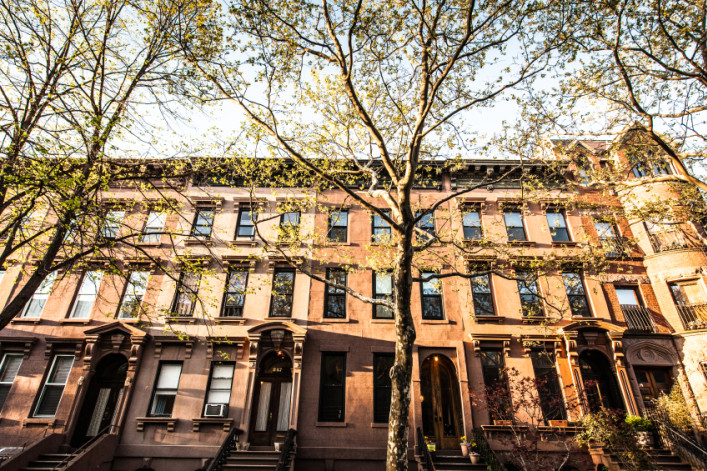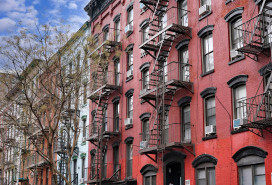5 all-too-common renovation shortcuts--and how to spot the serious ones

If you’re in the market for a Brooklyn brownstone, there’s a very good chance you’ll be buying from a flipper--a real estate investor who’s bought a house, done a speedy renovation, and put the place back on the market to snag the maximum profit. If the seller's cut corners, you could be in for costly repairs and big-time headaches. On the other hand, not every shortcut a seller takes should be a dealbreaker.
Indeed, in today’s market, where brownstones sell quickly--and often for more than their asking prices--compromising on some lackluster finishes may actually help you close a deal, says Donald Brennan, the principal of Brooklyn-based brokerage Brennan Realty Services, a trained architect and the host of a free monthly webinar, Brooklyn Market Update - Live.
"When competition is significant, and a property is priced correctly, you will have little to no room to negotiate issues you may identify as being of concern to you," says Brennan. "You can obviously bring any concern you have to the attention of the seller but the market forces right now are working against buyers--so while it doesn't hurt to express a concern with an offer, you may not get the reaction you hope from the seller."
So how do you recognize what's a seller cutting corners and what's a real problem? And when should you negotiate with a seller and when is it best to walk away? Read on.
1. Low quality finishes
Installing cheap faucets, light-switch plates, or door and window hardware, opting for hollow-core instead of solid wood doors, and skimping on things like wall cabinets in the kitchen are all popular tricks flippers use to minimize their renovation costs.
Keep in mind that tacky finishes are easy and inexpensive to replace. “The cosmetic things, in my experience, tend to be the least costly pieces of what was done to make it bright and shiny and new to resell,” Brennan explains. “Most of those things can be swapped out.”
The one caveat: make sure you’re not shelling out for high-end finishes and getting something from the bargain bin. “You shouldn’t be paying top dollar for plastic, hollow doors,” Brennan says.
2. Appliance issues
Like finishes, inexpensive kitchen appliances are another way flippers may keep their costs down. They’re also easy to switch out, if a bit more expensive.
The real headache comes when you need to change the location of an appliance. Sometimes, for example, a flipper will decide not to invest in moving the sink from a spot wedged into a kitchen corner. As soon as you start changing the plumbing, electrical or HVAC systems, “you start to get into expensive corrections and improvements,” Brennan says.
3. Asymmetry
Many brownstones were built symmetrically--with windows, doors and other features lining up along the middle of walls--so instances of asymmetry often reveal that someone has altered the structure of a house.
This isn’t automatically a reason to walk away. It’s possible that, for example, a renovator built out a wall to cover up new plumbing. “There’s nothing wrong with having to fix structural issues in buildings. It’s not uncommon,” says Brennan. “But if it was done correctly, the seller shouldn’t be trying to hide anything.”
Spot a pattern on the original floor that’s being covered up by a wall? Are the windows off center? It’s worth asking what happened, and if a seller is evasive, consider that a red flag.
4. A freshly painted exterior
If a brownstone’s exterior is crumbling, there are two main ways to fix it: slapping on a coat of paint or applying a thin layer of stucco. The latter is the more expensive and labor-intensive option, since the process involves chipping away loose stone to create a surface for the stucco. But this also helps repair the facade.
By contrast, painting is a short-term fix that can cover up potential problems and even trap water between the stone and the paint. It’s not necessarily a dealbreaker--if there’s little evidence of decay in the facade, it may be worth the sacrifice for an otherwise ideal house. But you may need to fix the exterior sooner than you otherwise would. (In general, brownstone facades need to be repaired every 20 years, Brennan says.)
5. Structural issues
When it comes to brownstones, the things you can’t see are usually the ones that will cause the most pain. To diagnose problems with the structure of a house, look at the ceilings and walls, especially near the bottom of the building and in the foundation walls, says Brennan.
If the ceilings have been dropped or the walls have been furred, or there are patches of stucco or cement on the walls in the cellar, there may be a hidden issue you need to know about.
“It’s those kinds of things that on first inspection may look nice and clean, and everything is level,” Brennan says. “The question that should be raised is, what is that covering up, if anything?”
Cracks are also troublesome, though if they’re vertical or diagonal, it’s less likely they’re a major problem. “A horizontal crack is a serious, serious problem--or a sign of a serious problem,” Brennan says, adding, “That would be something that would definitely … be put into the category of too costly to fix, depending on the purchase price.”
Whether to haggle or walk away
If you spot a house with any of these issues, the question of whether to negotiate with a seller to drop the purchase price or to find a different house depends on what you’re looking for, and how many other buyers are shopping for a similar type of place.
If you’re hoping to put in an offer on a prime brownstone in a coveted neighborhood--i.e. you're facing a ton of competition--you’ll have a lot less room to negotiate, and you may lose out to a bidder who’s happy (or at least willing) to take the place as is.
That said, the typical flipper is trying to make a deal quickly, so anything you can do to speed up the process--like paying all cash or closing as soon as possible--will give you a leg up.
Can’t manage either of those things? Your best bet may be to pass on the flipper’s house and look at other properties, or bite the bullet and get ready to do your own reno.
More from Brennan Realty:
9 things Manhattanites need to know before buying in brownstone Brooklyn
Donald Brennan, president of Brennan Realty Services, is a real estate broker specializing in brownstone Brooklyn. You can register here for his next free webinar, Brooklyn Market Update - Live.
























